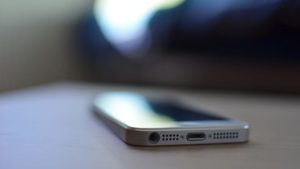Last week at FindBiometrics we began our featured look at biometrics in education while facial recognition was the modality that made the most headlines. That was partially thanks to some continued industry controversy, which we covered as consumer and government applications rounded out the news.
Education and Identity
 August marks the start of back to school season and as such there is no better time to focus on the many ways biometrics technology is finding its way into all levels of education. Last week we kicked off Education Month here at FindBiometrics with a primer while also reporting on a new deployment of Iris ID technology at an American university, allowing weekend access to the school’s dining hall.
August marks the start of back to school season and as such there is no better time to focus on the many ways biometrics technology is finding its way into all levels of education. Last week we kicked off Education Month here at FindBiometrics with a primer while also reporting on a new deployment of Iris ID technology at an American university, allowing weekend access to the school’s dining hall.
Iris Biometrics To Keep Students Fed on Weekends
Facial Recognition
 Facial recognition was the most active modality last week, with NEC launching the latest update of its NeoFace solution, Tygart announcing its upcoming mobile face recognition system aimed at government applications, and Australian researchers working at using the modality for pain management in healthcare. Meanwhile, MorphoTrak (Safran) announced that it will be offering vendor-independent facial recognition training, and a new report surfaced painting a positive picture for face-based biometrics over the next few years.
Facial recognition was the most active modality last week, with NEC launching the latest update of its NeoFace solution, Tygart announcing its upcoming mobile face recognition system aimed at government applications, and Australian researchers working at using the modality for pain management in healthcare. Meanwhile, MorphoTrak (Safran) announced that it will be offering vendor-independent facial recognition training, and a new report surfaced painting a positive picture for face-based biometrics over the next few years.
New App Gives Patients a Voice in Pain Management
Smartphone Face Recognition for Gov’t Coming From Tygart
Report: 9.5 Percent CAGR for Facial Biometrics Market
NEC Releases New NeoFace Update
MorphoTrak to Offer Facial Recognition Training
Controversy
 The two big facial recognition class action lawsuits were in the news last week, with Shutterfly angling for a dismissal and Facebook moving the proceedings to its home turf of California. Meanwhile, Police Scotland were placed under investigation over the agency’s use of facial recognition.
The two big facial recognition class action lawsuits were in the news last week, with Shutterfly angling for a dismissal and Facebook moving the proceedings to its home turf of California. Meanwhile, Police Scotland were placed under investigation over the agency’s use of facial recognition.
Facbook Brings Biometrics Lawsuits To California
Shutterfly Seeks Dismissal for Privacy Case
Police Scotland Investigated Over Use of Facial Recognition
Government
 MorphoTrak came out on top of NIST’s Tatt-C tattoo recognition challenge, we reported last week. Meanwhile the United States implemented biometric ePassport requirement so for its visa waiver program and the United Nations’ refugee agency made good on bringing biometric IDs to South Sudan.
MorphoTrak came out on top of NIST’s Tatt-C tattoo recognition challenge, we reported last week. Meanwhile the United States implemented biometric ePassport requirement so for its visa waiver program and the United Nations’ refugee agency made good on bringing biometric IDs to South Sudan.
US Implements ePassport Requirement for Visa Waiver Program
MorphoTrak Tattoo Recognition Tops NIST Challenge
UN Refugee Agency Brings Biometric IDs to South Sudan
The Mobile Consumer
 Microsoft made the news twice last week – having launched the biometrics-supporting Windows 10 the week prior – with a patent for advanced mobile authentication and the announcement that it is collaborating with partner Synaptics on a touch-pad fingerprint sensor. Speaking of fingerprint biometrics, both NEXT Biometrics and Precise Biometrics announced big new orders for their respective products, and we reported on the upcoming Baizen Note 3 which will be sporting a biometric sensor of its own – something that a new report from Frost & Sullivan illustrates as becoming quite common.
Microsoft made the news twice last week – having launched the biometrics-supporting Windows 10 the week prior – with a patent for advanced mobile authentication and the announcement that it is collaborating with partner Synaptics on a touch-pad fingerprint sensor. Speaking of fingerprint biometrics, both NEXT Biometrics and Precise Biometrics announced big new orders for their respective products, and we reported on the upcoming Baizen Note 3 which will be sporting a biometric sensor of its own – something that a new report from Frost & Sullivan illustrates as becoming quite common.
Finally, Sensory, Inc. unveiled the newest version of its TrulyHandsfree product: a low power speech recognition solution that uses deep learning to mitigate noise interference.
The following stories represent the top consumer and mobile biometric news from the week that was:
Sensors Spreading in Consumer Electronics
Synaptics Building Biometric Touchpad Tech For Windows 10
Microsoft Aiming to One-Up Touch ID
CoolPad Puts Fingerprint Sensor on Dazen Note 3
TrulyHandsfree 4.0 Uses Deep Learning to Filter Noise
NEXT Biometrics Receives Major New Order
ELAN Licenses Precise Biometrics Technology
*
Stay posted to FindBiometrics throughout the week as we continue to bring you the best in identity management news. Be sure to follow us on Twitter so you don’t miss a thing.
—
August 10, 2015 – by Peter B. Counter


Follow Us